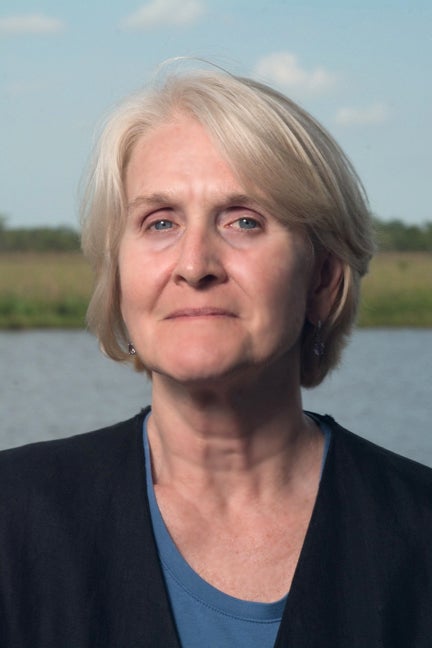Victory – Finally – Against the Longest Oil Spill in U.S. History
After trying various scorched-earth tactics to avoid accountability, Taylor Energy is now liquidating to pay over $400 million in cleanup costs.

This page was published 3 years ago. Find the latest on Earthjustice’s work.
It’s hard to believe an oil spill could last for 18 years without much fanfare.
Yet a sunken oil rig owned by Taylor Energy, off the coast of Louisiana, has been spewing oil into the Gulf of Mexico since 2004. Hurricane Ivan slammed into the Gulf Coast that year, causing a landslide that toppled and sank Taylor’s drilling platform. The impact opened a crater in the sea floor the size of a basketball court, where Taylor’s sunken wells have leaked oil into the Gulf ever since.
This year, there is finally good news: After trying various scorched-earth tactics to avoid accountability, Taylor is now liquidating to pay over $400 million in cleanup costs. Earthjustice and Gulf-based environmental group Healthy Gulf achieved this victory after years of legal tactics by Taylor to stall the cleanup indefinitely.
At the time of the spill, Taylor downplayed the extent of the leak, claiming it was less than 3 gallons of oil per day. The government took Taylor at its word and did nothing for years.
The truth was much worse: according to a federal expert, as much as 29,274 gallons per day flowed from the leak.
“Taylor was an eye-opening experience for us,” says Cynthia Sarthou, who lives in Louisiana and is the executive director of Healthy Gulf. Sarthou was an attorney in Seattle in the late ‘90s when she saw an ad for a nascent environmental watchdog group that vowed to investigate environmental injustices in the Gulf, her home region.

Cynthia Sarthou, the executive director of Healthy Gulf. (Healthy Gulf)
In 2010, Healthy Gulf discovered Taylor’s oil spill by chance while on a survey mission for the BP Deepwater Horizon spill.
Sarthou recalls, “My staff flying out there said, ‘There are miles of raw slick, but it’s not in the area of the BP disaster. What the hell is this?’ So, we started investigating.”
Healthy Gulf pressed the government for years to make Taylor contain the oil, which at times stretched 21 miles on the water’s surface. There were various half-hearted efforts to plug the sunken wells, but the oil continued flowing into the Gulf.
Fossil fuel catastrophes in the Gulf have become all too common as the oil and gas industry seeks to expand its footprint there, building new polluting infrastructure that will keep the country locked into fossil fuels for decades to come. Companies self-report thousands of oil spills to NOAA every year; many others go unreported. They are caused by tanker fires, malfunctioning equipment, sinking, or hurricanes.
Oil spills brutalize marine wildlife, inflicting poisoning, heart damage, enlarged livers, immune dysfunction, and a generally painful death. There is no safe level of oil in the Gulf: any amount can cause major environmental harm, and leaks are difficult to ever fully contain. The best way to protect the Gulf is to remove the risk of oil catastrophes completely, which is one reason why Earthjustice is fighting oil and gas development in the Gulf at every stage of the process. This year, we opened a new office in Houston, Texas, to bring the fight to the oil industry’s doorstep.
In 2018, Earthjustice began investigating the leak in partnership with Healthy Gulf. After a front-page story on the Taylor spill ran in The Washington Post, creating national media attention on the oil spill, the U.S. Coast Guard scrambled to hire a remediation company to cap and remove the oil.
Taylor employed numerous slimy tactics to block work on the oil spill or pay for its cleanup. The company sued the government and the remediation contractor to stop the containment effort. Earthjustice intervened to defend the Coast Guard’s actions on behalf of Healthy Gulf — so Taylor sought court permission to pry into Healthy Gulf’s advocacy efforts, which the court denied. Meanwhile, the former owner of Taylor Energy, wealthy Louisiana billionaire Phyllis Taylor, reaped millions in tax deductions tied to the cleanup cost, making it favorable for her to drag out the cleanup. As the cases played out, remediation on the spill continued, collecting the oil even as the wells continued to erupt.

A rainbow sheen in the Gulf of Mexico in 2011 from the downed Taylor Energy platform. Oil has been leaking from it since 2004. (Healthy Gulf)
Victory came last winter, when Taylor settled with the government and agreed to pay more than $400 million towards the cleanup effort. In June, the government ordered the company to liquidate.
“This means the Department of the Interior will now be able to move forward with finally plugging this long-running oil spill,” says Chris Eaton, senior attorney at Earthjustice. “The Taylor spill is another example of the disastrous impact of offshore drilling on the Gulf’s ecosystem, wildlife, and communities.”
It all comes down to stopping the industry’s lifelines — petrochemicals, oil exports — from taking root again in the Gulf, says Sarthou of Healthy Gulf. “Industry just comes back and entrenches in the Gulf. You can beat it back from the Atlantic, from Alaska, but it always comes back here. It sees the Gulf as its safe home base. They’re going to continue, unless we stop them here.”
Earthjustice’s Oceans Program uses the power of the law to safeguard imperiled marine life, reform fisheries management, stop the expansion of offshore oil and gas drilling, and increase the resiliency of ocean ecosystems to climate change.